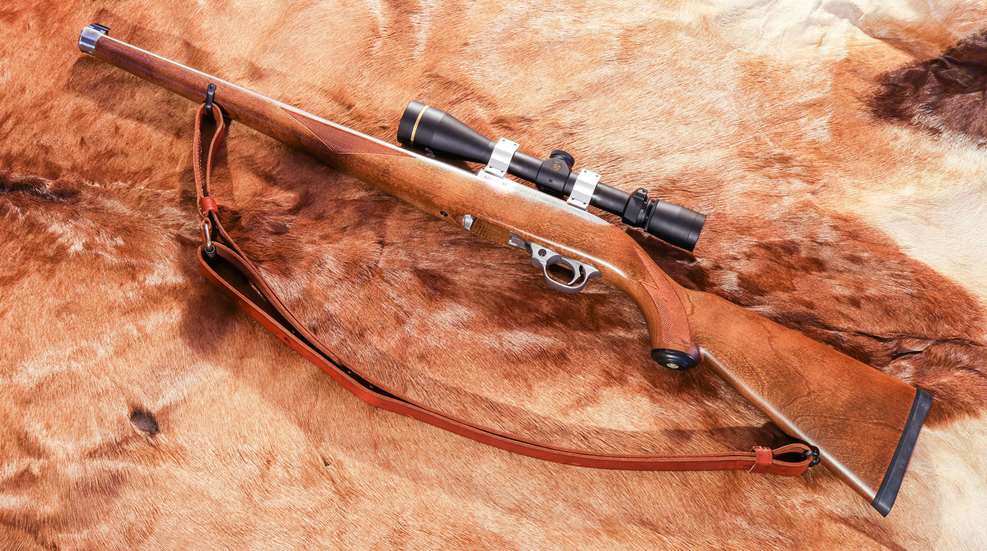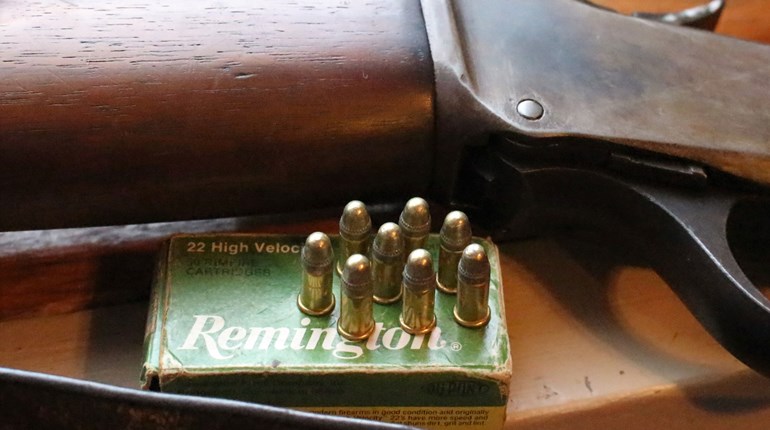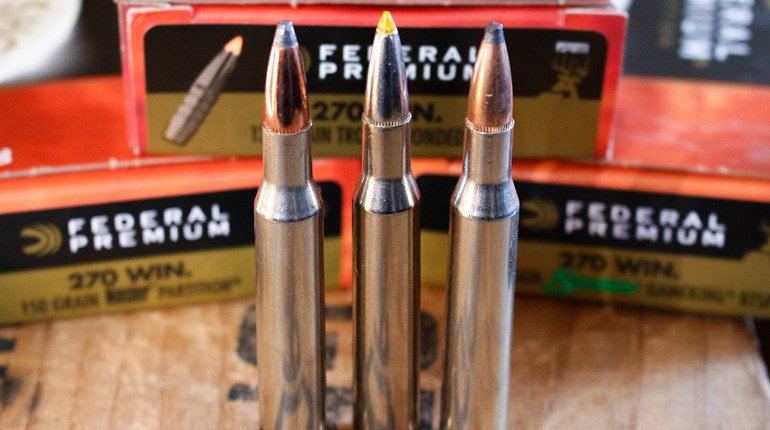
As a young teenager, just old enough to embark on small-game hunts with my father and grandfather, and just beginning to learn marksmanship, a rimfire rifle was probably the most important tool available to me. I didn’t have my own rifle yet—that would come the following Christmas in the form of a bolt-action Ruger 77/22 that I shoot to this day—but my father would allow me to use his semi-auto 10/22 so long as I was responsible. It taught me firearms safety, how to clear the chamber even though the magazine was removed, and Ol’ Grumpy Pants made sure I relied upon marksmanship over firepower.
His Ruger 10/22 was not his only rimfire, as Dad still has the Sears-Roebuck autoloader he saved so long for in his youth, but it is undoubtedly his favorite. It is the carbine variant, not the rifle, and it is marked “Made in the 200th year of American Liberty”; it was not lost on me that my father’s birthday is October 22nd, so a 10/22 makes perfect sense. What is it about this little autoloader that has such a universal appeal? Let’s dive a bit deeper into what makes the 10/22 tick, and why it has survived for six decades.

It is well known that William B. Ruger is one of America’s most revered firearm designers; though he may not claim the sheer number of designs that John Moses Browning could, Ruger’s efforts are undeniable. His engineering efforts garnered him a position at the Springfield Armory while still in his twenties, and he partnered with Alexander Sturm in 1949, with Sturm, Ruger & Co. producing America’s most popular rimfire target pistol—the Ruger Standard. Add to that the Single Six, the Blackhawk, the Number One, the M77 centerfire rifle and the Red Label shotgun, and you’ve got an impressive lineup. But the reliability and repeatability of the Ruger 10/22 stand out to this day, despite a number of attempts to usurp the crown.

Using a recoil-operated action and a receiver made from investment cast aluminum, the Ruger 10/22 offers a detachable ten-shot, polymer rotary magazine for reliable feeding, flush mounted to the bottom of the rifle. Following on the heels of the 44 Magnum Carbine—itself a sound design—the 10/22 gave the hunter/shooter a no-frills, practical package that was equally applicable at the target range or in the squirrel woods. A walnut stock—unadorned for the carbine, checkered for the rifle—cradled the barreled action, via a band at the fore (on some models) and a screw at the rear, with a curved plastic butt pad at the rear. That walnut stock was quickly replaced with a more-affordable birch stock. The 10/22 is equipped with a cross-bolt safety at the front of the triggerguard, and though drilled and tapped for mounting an optic, the rifle is usually equipped with iron sights: a barrel band front sight and a folding, adjustable buckhorn-style sight at the rear.
The Ruger 10/22 uses an innovative V-block system to attach the barrel to the receiver, another feature which makes the rifle so attractive. Should you want to change barrels, or even just give your rifle a thorough cleaning, disassembly of the receiver and removal of the barrel isn’t a difficult undertaking. I’m certainly no gunsmith, but the beautiful simplicity of the Ruger 10/22 makes it easy to disassemble the rifle. William B. Ruger and his engineer Harry Sefried certainly got it right the first time, as the sales of the rifle exceed the five-million mark in the 60 years since its introduction. While the Carbine and Sporter models of 2024 certainly resemble the pair of guns released in 1964, the regal rimfire has evolved into so much more than the original offerings without losing the DNA of Ruger’s brainchild.

There are Takedown, Tactical, and Compact models with polymer stocks; there are Target and Competition models with adjustable combs and stocks specifically designed for bench and competitive work; and though it isn’t currently catalogued, there is the Mannlicher-stocked International model, which is my particular favorite. My own International is a stainless/checkered beech stock variety from the 1990s, and it is a ton of fun to carry and shoot. With an 18 ½-inch barrel, the contrasting look of the stainless against the wood stock, and the overall cool-factor of the full-length stock, it is unique enough to grab the eye, yet traditional enough to feel the roots of the design.

Ruger’s overall design—again, it is an easy system to dissemble and customize—makes for a platform friendly to after-market parts. And there is no shortage of after-market parts and companies who make them, with names like Volquartzen, Green Mountain, Boyd’s, Timney, and more offering high-quality parts which can make a definite difference in the performance of your rimfire. Bull barrels, laminate stocks, high-performance bolts, and more—the world is your oyster when it comes to making a Ruger 10/22 rifle your own. Depending on your desired use, be it a target/competition rifle or a more traditional hunting rifle, you can customize a 10/22 to best suit your needs without irreversible modifications. And, in the opinion of this author, the trigger would be the first area I’d look to make an improvement.

I’ve owned, shot, and hunted with all sorts of Ruger rifles over the last 40 years, and with the exception of a properly tuned Number One trigger, I've yet to find a factory trigger that I can describe as “sweet.” I’ve found them to be heavy, sometimes gritty and often with a bit of creep, though not completely unusable. My own 10/22 trigger breaks at over five pounds, but if you can operate with that weight of pull, the rifle is plenty accurate. I will say that when I've installed a Timney or other premium trigger in my Ruger rifles, they become an undeniable joy to shoot.

If you were forced to restrict yourself to just one .22 LR rifle, I would support your choice of the Ruger 10/22. It has the accuracy needed by hunters and target shooters, it offers the rapid follow-up shots that fans of the autoloaders appreciate, and is both ergonomic and affordable. The Sporter and Carbine can still be had for less than $400, with the fancier Target and Competition models carrying a price tag of roughly $800 and ~$1,000, depending on what accoutrements you desire. For the collectors, there is a line of 75th Anniversary models, engraved to commemorate the founding of Sturm, Ruger & Co.; four different 10/22 models are offered to celebrate the date. There are also 60th Anniversary models, commemorating the release date of the rifle.
Sixty years after its release, the Ruger 10/22 rifle shows no signs of slowing down, as the .22 LR cartridge remains as popular as it was in the 19th century, and this platform remains one of America’s favorite means of delivering it. Thank you, Mr. Ruger, for an absolutely wonderful design.





































